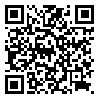BibTeX | RIS | EndNote | Medlars | ProCite | Reference Manager | RefWorks
Send citation to:
URL: http://jdisabilstud.org/article-1-2518-en.html
2- Department of Educational Sciences, Khoy Branch, Payam Noor University
Background & Objectives: Anxiety plays an important role in reducing positive psychological characteristics and traits such as psychological well–being, school adjustment and cognitive emotion regulation strategies. Psychological well–being means having a positive feeling and attitude towards oneself for growth, development, and prosperity. Also, adjustment is the process of adapting to new and stressful situations, and school adjustment refers to the student's ability to adapt to educational conditions, school environment, teachers, and students and emotional adaptation in interpersonal and intrapersonal relationships. In addition, cognitive emotion regulation strategies refer to cognitive strategies and methods for monitoring, evaluating and modifying emotional responses or managing emotional information. Emotion regulation training is one of the most effective ways to improve psychological characteristics, which helps people to identify their incompatible and inefficient beliefs and thoughts and replace them with flexible beliefs and strategies. Therefore, this research aimed to determine the effectiveness of emotion regulation training on psychological well–being, school adjustment, and cognitive emotion regulation strategies in anxious children.
Methods: The present study was quasi–experimental with a pretest–posttest design and control group. The research population included anxious primary school children of Ahvaz City, Iran, during the 2019–20 academic year. Considering the inclusion criteria, 40 students were selected by purposive sampling method and assigned into two groups by simple random method (each group 20 people). The inclusion criteria included obtaining a minimum score of 35 on the Anxiety Children Questionnaire (Spence, 1979), no history of rejection in previous grades, not receiving psychological services in the last three months, and no history of receiving emotion regulation training. Also, the exclusion criteria included an absence of more than one session and withdrawal from continuing cooperation. The experimental group participated in eight 90–min sessions of emotion regulation training and the control group did not receive any training. The intervention was performed by the first researcher in one of the counseling centers related to the Education Administration of Ahvaz City for one month (two sessions per week). The research instruments were the Psychological Well–Being Scale (Ryff, 1989), School Adjustment Inventory (Sinha and Singh, 1993), Cognitive Emotion Regulation Strategies Questionnaire (Garnefski et al., 2001), and Anxiety Children Questionnaire (Spence, 1979). In this research, descriptive statistics indicators (mean, standard deviation, frequency, percentage) were used to describe the data. Data were analyzed by the Chi–square test, the independent t test, and univariate analysis of covariance methods in SPSS software version 19 at a significance level of 0.05.
Results: The results of the independent t test showed that experimental and control groups in the pretest stage had no significance different in terms of psychological well–being (p=0.556), school adjustment (p=0.365), positive cognitive emotion regulation strategies (p=0.436), and negative cognitive emotion regulation strategies (p=0.819). However, posttest results showed significant differences in terms of variables of psychological well–being (p<0.001), school adjustment (p=0.005), positive cognitive emotion regulation strategies (p<0.001), and negative cognitive emotion regulation strategies (p<0.001). According to the effect size, 87% of these changes in psychological well–being, 84% in school adjustment, 91% in positive cognitive emotion regulation strategies, and 85% in negative cognitive emotion regulation strategies have resulted in the effectiveness of emotion regulation training.
Conclusion: According to the results of the present study, emotion regulation training had an effective role in improving psychological well–being, school adjustment, and cognitive emotion regulation strategies in anxious children. Then, psychologists and therapists can use emotion regulation training to improve the psychological characteristics of anxious children.
| Rights and permissions | |
 |
This work is licensed under a Creative Commons Attribution-NonCommercial 4.0 International License. |



